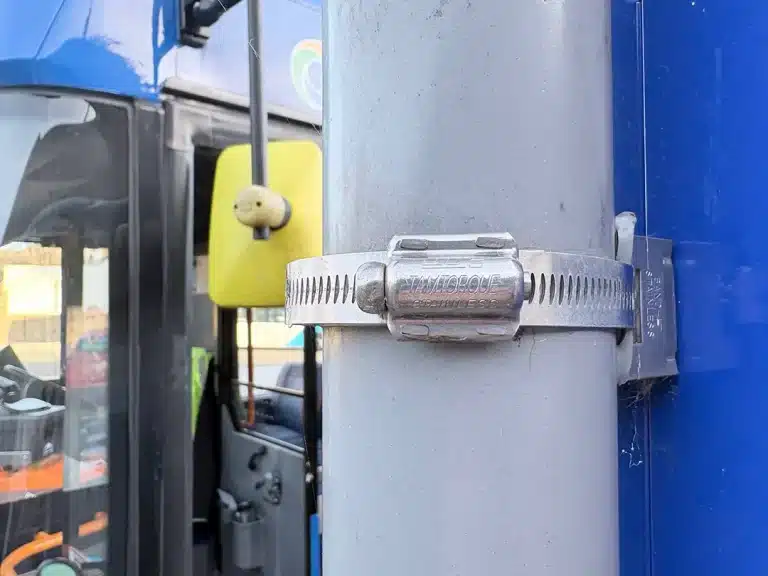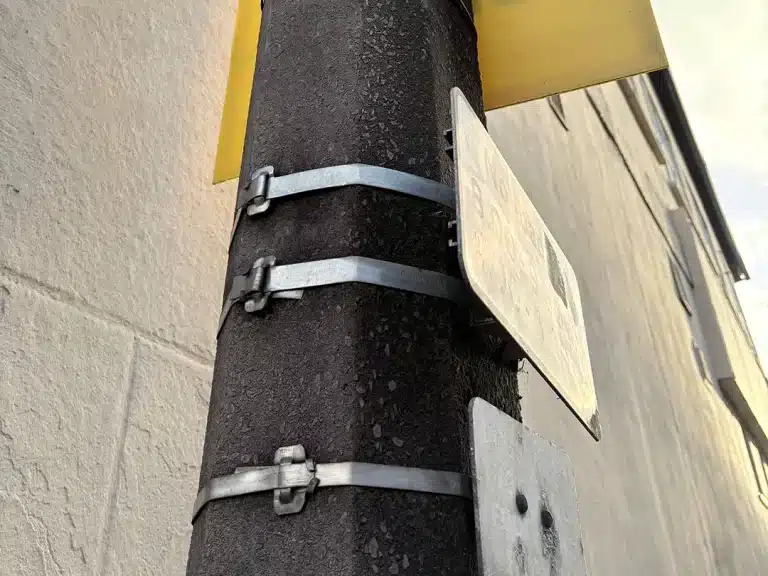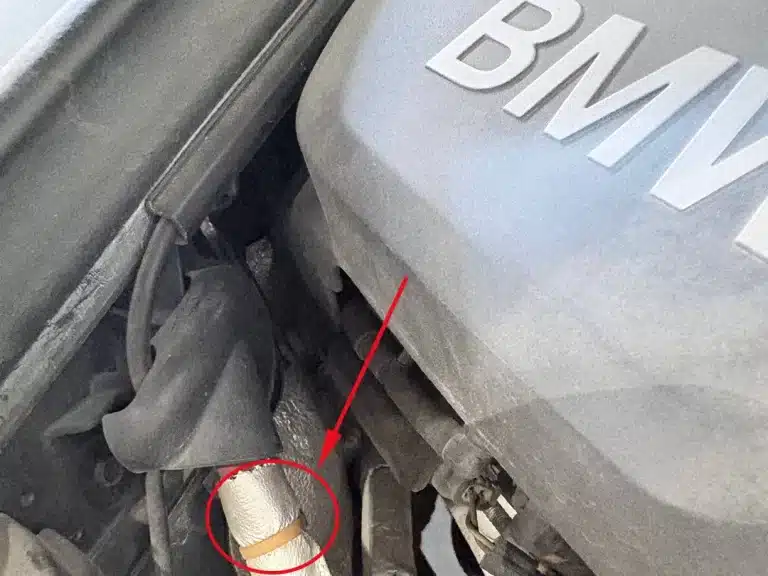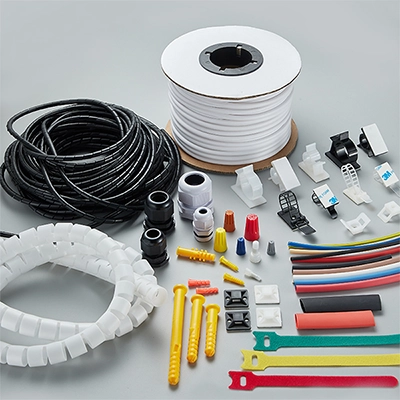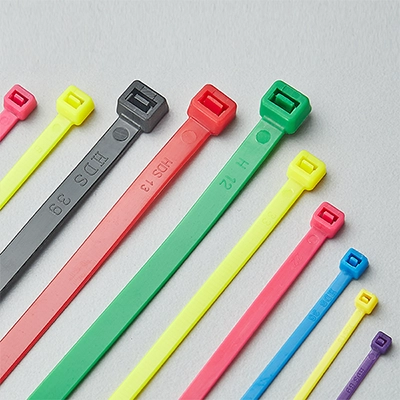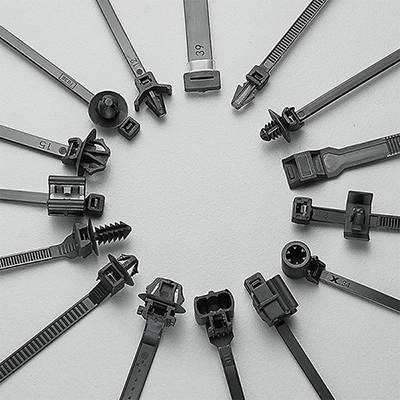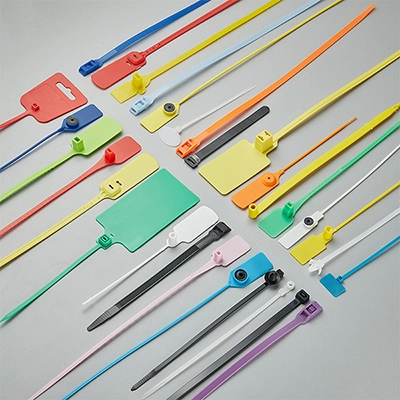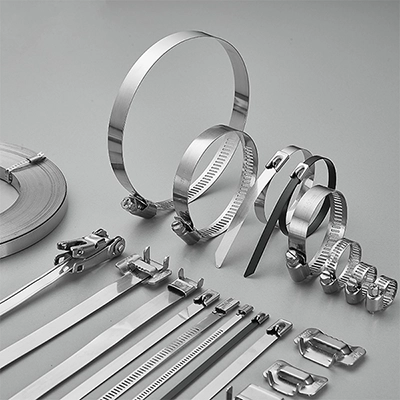How to Loosen a Stainless Steel Cable Tie? In our previous article “How to Release Cable Ties Effortlessly in 3 Seconds” we shared methods to unlock nylon cable ties. Today, we focus on the sturdier, more robust stainless steel cable ties.
We know that stainless steel cable ties, made from SS201, SS304, or SS316, with their superior durability and strength, play a vital role in various extreme environments. However, there are times when we need to unfasten them – perhaps for rewiring purposes or after using them for temporary fixes. Let’s walk through the steps to unfasten a stainless steel cable tie.
The Locking Mechanism of Stainless Steel Cable Ties
We first need to comprehend its locking mechanism to understand how to release a stainless steel cable tie. We’ve detailed this in our article “Explore the Locking Mechanism of Stainless Steel Cable Ties” In short, self-locking stainless steel cable ties have an internal rolling ball that moves forward as the tie is tightened, controlling the lock. Once tightened, the ball rolls into position B, locking into a groove at the head of the tie, preventing any backward movement and thus securing the tie.
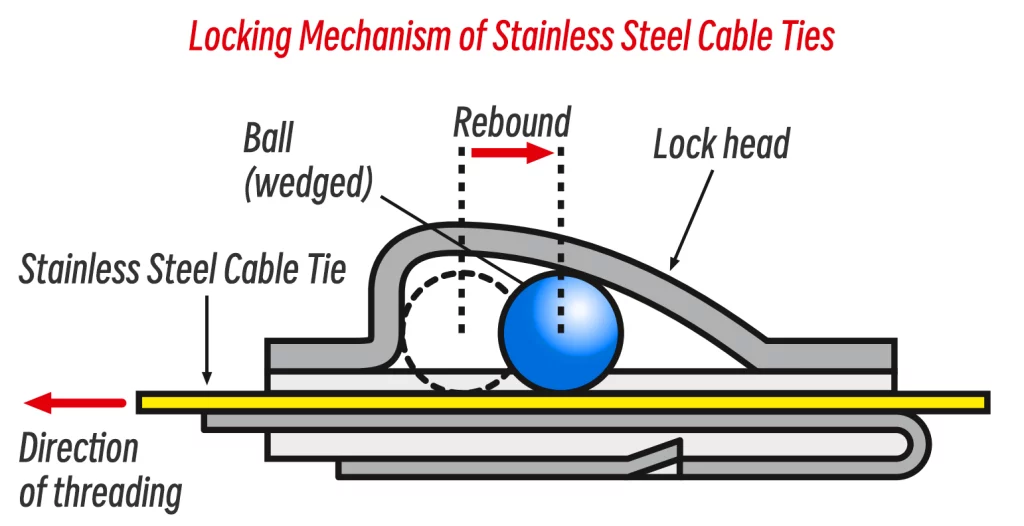
With this mechanism in mind, if we can keep this free-moving ball at position A, separated from the steel strap, the strap becomes movable. How do we do that?
How to Loosen a Stainless Steel Cable Tie?
Step 1: Prepare another stainless steel cable tie of the same width.
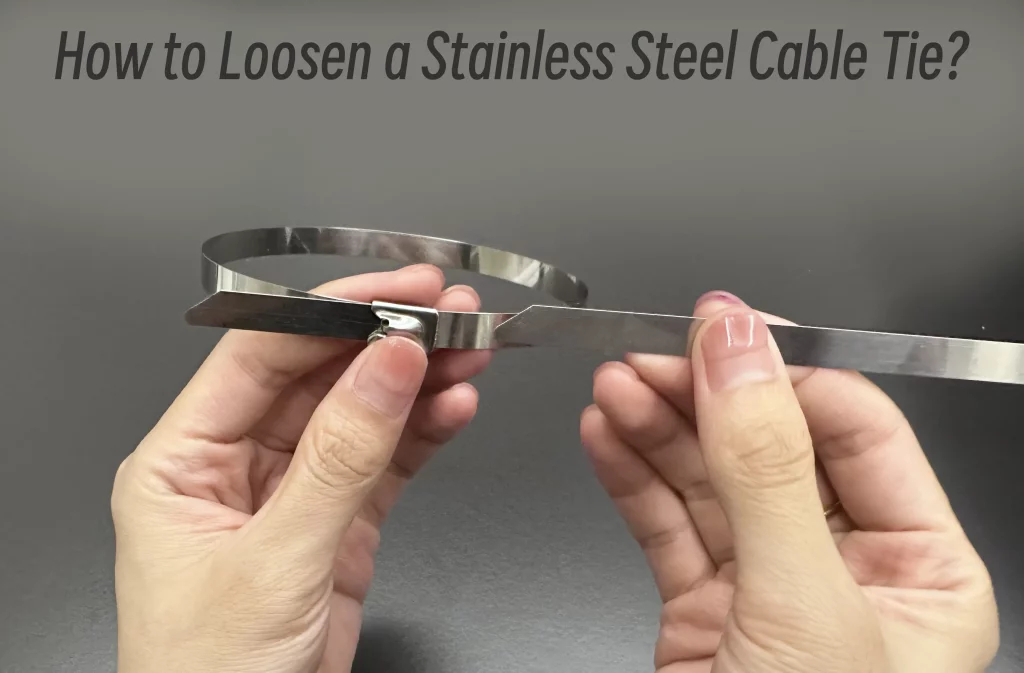
Step 2: Thread the steel strap of tie B through the head of tie A to separate tie A’s ball and the steel strap. Note: The direction of insertion must be the same; otherwise, it won’t go through.
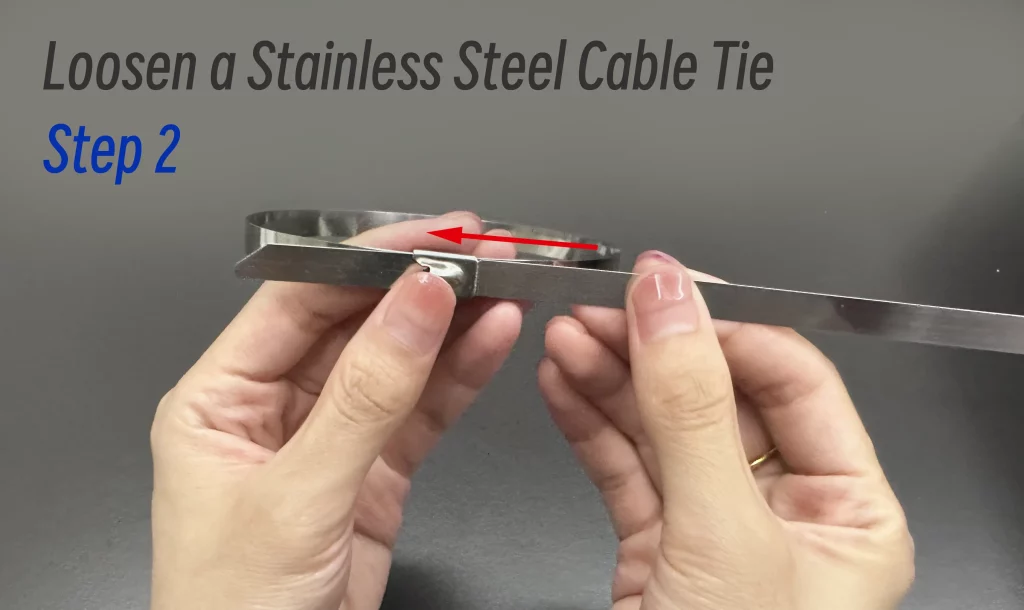
Step 3: Once the steel strap is inserted and held in place, gently pull the original steel strap outwards until the stainless steel cable tie is unfastened.
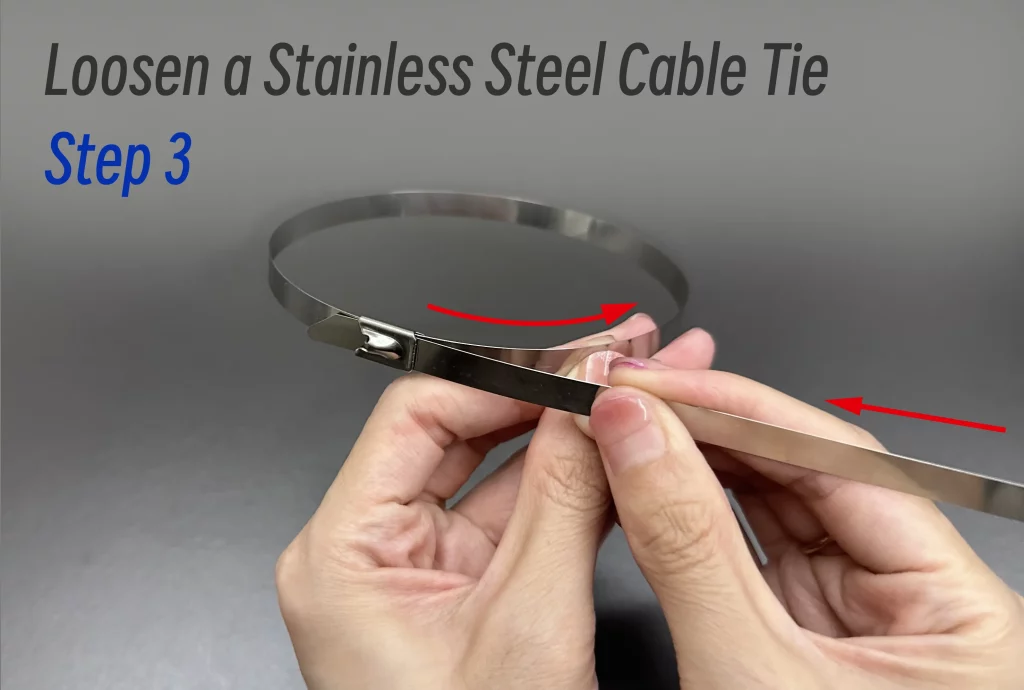
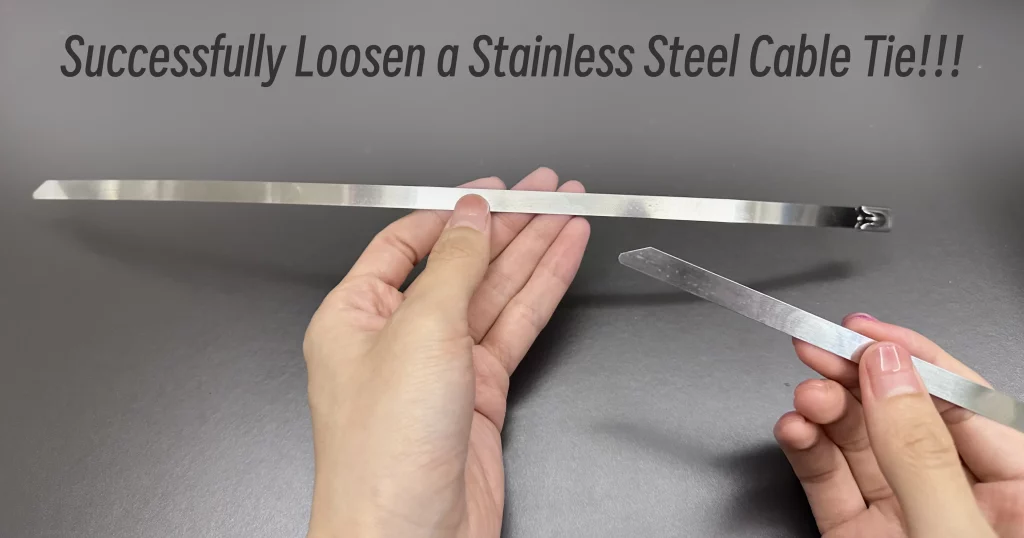
And there you have it – a successfully unfastened stainless steel cable tie!
It’s so easy! So, to unfasten a stainless steel cable tie, you need to use another one of the same width to “cover” it! This clever trick saves precious time and costs, avoiding the hassle of having to cut the tie due to incorrect use. More importantly, it greatly enhances work efficiency, allowing more flexibility in emergency situations, which is particularly crucial in industrial operations.
